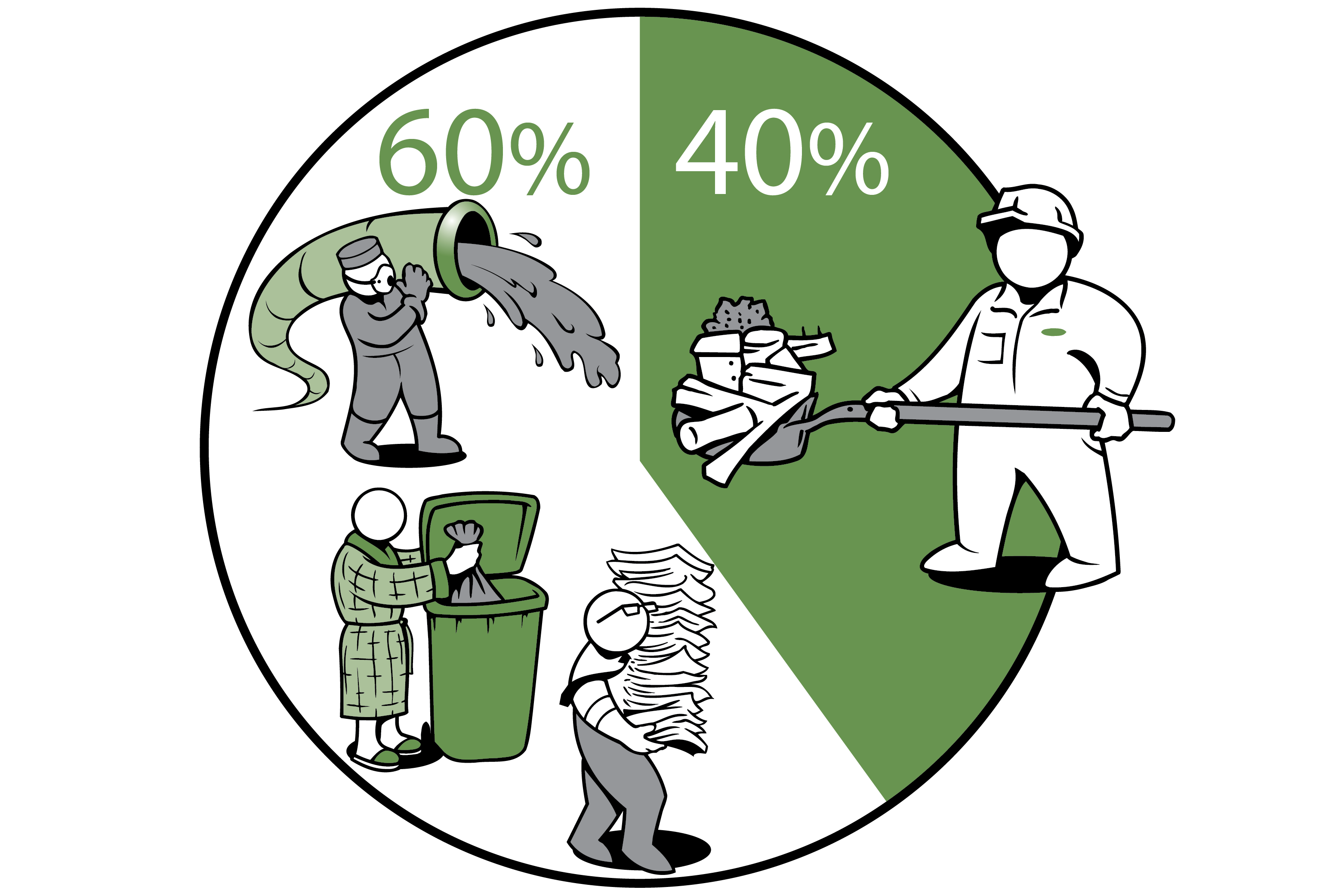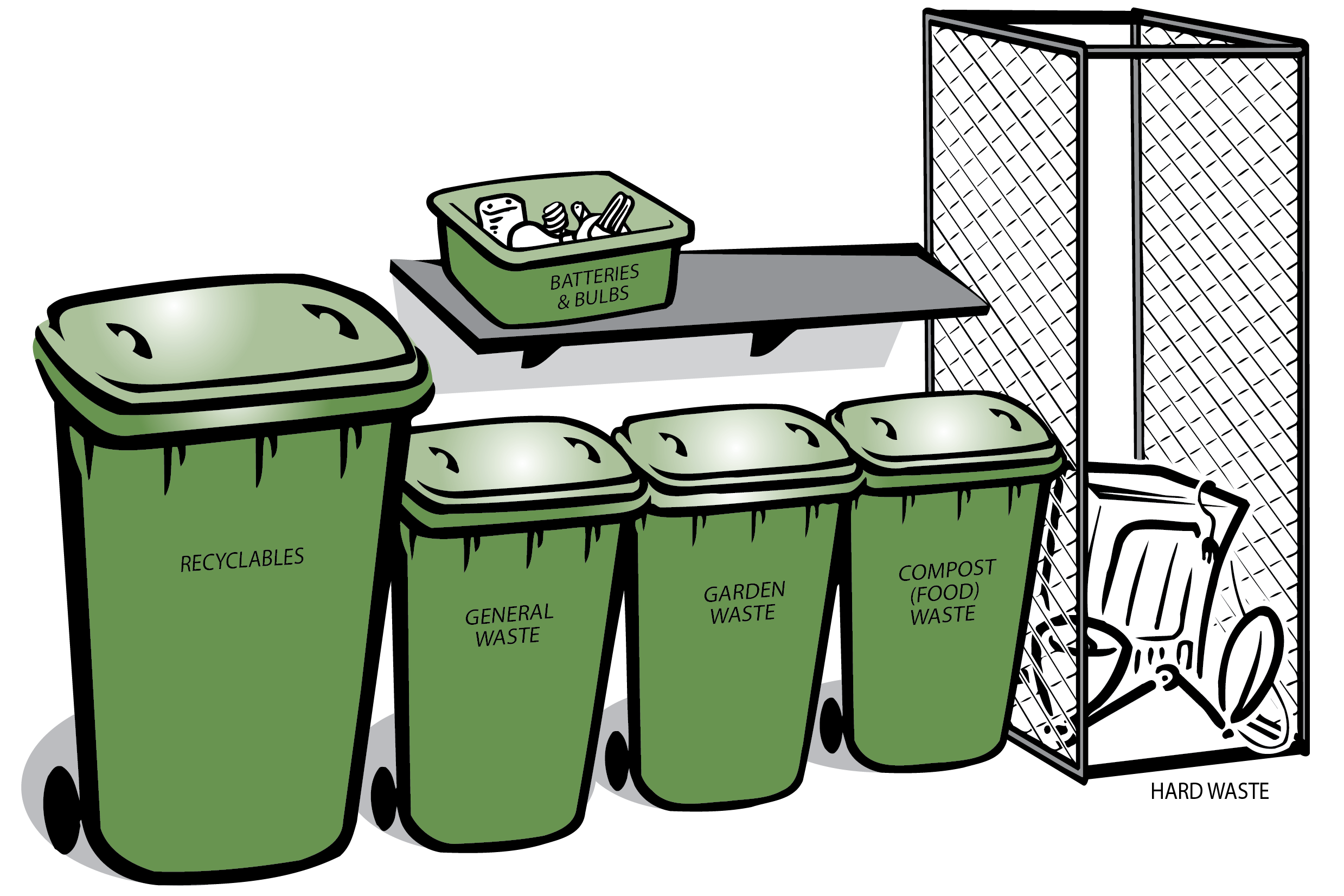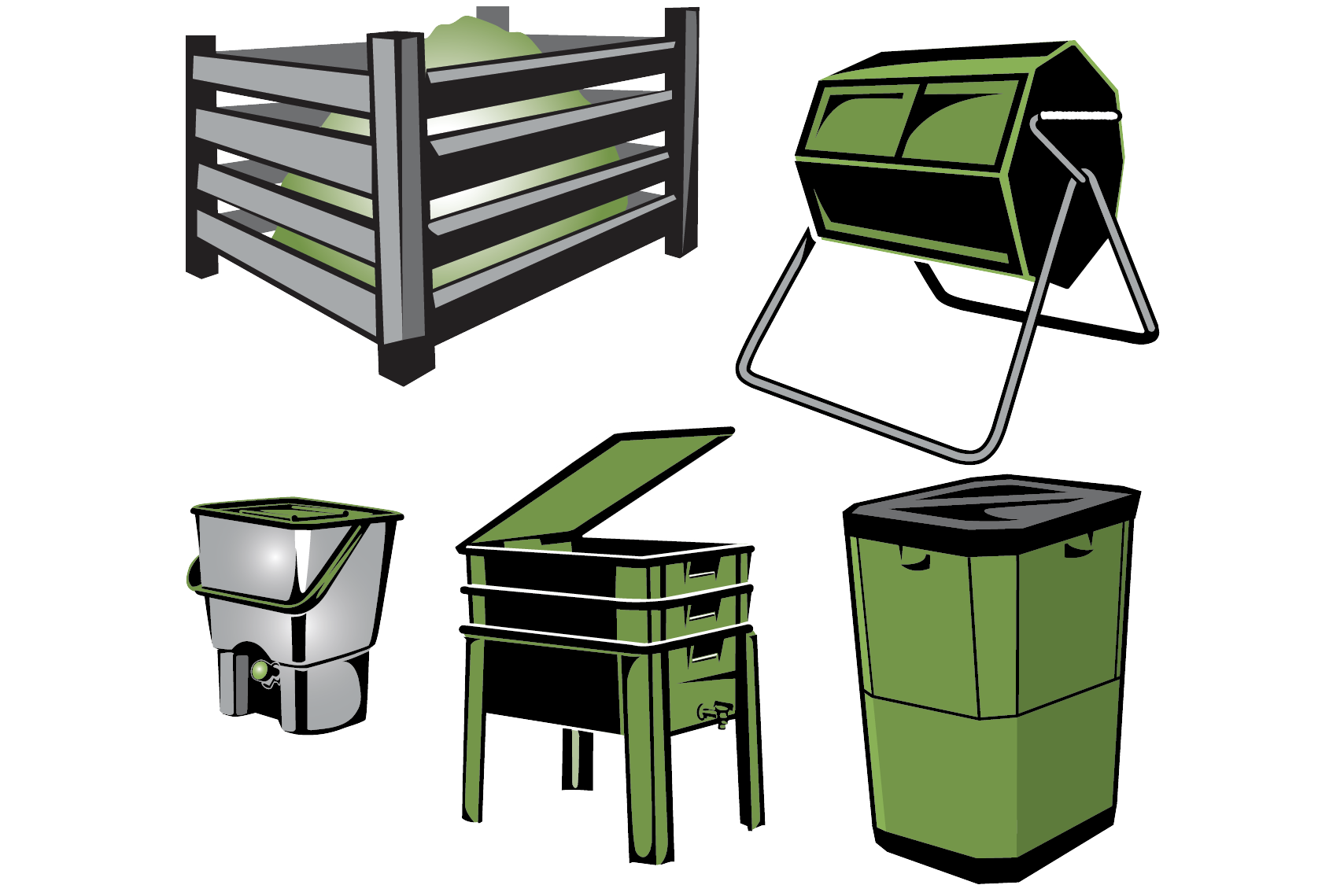#  Waste and Resource Recovery
Waste and Resource Recovery
Version: 1, last updated: 23 Jun 2025
Mandatory Requirements and Council's Best Practice Standards
# Mandatory Requirements
You may be required to prepare an Environmental Management Plan and / or Construction and Operational Waste Management Plan as part of your planning permit application. Ensure ongoing health, safety and amenity levels for equipment and safety installations in accordance with National Construction Code (NCC) requirements.
# Council's Best Practice Standards
- Adopt a recycling target of at least 70% for all demolition and construction waste.
- Provide recycling facilities that are at least as convenient for building occupants as general waste facilities.
- Provide on-site management of food and garden waste.
- Commit to the preparation and availability of a Building Users Guide (BUG) and/or Building Operations Manual for large developments.
- For larger developments, engage ESD professional(s) on the project design team to provide advice from preliminary design through to construction.
Developments, which seek to vary from these best practice standards, must demonstrate how waste management and resource recovery are satisfactorily addressed.
# Council's Design Advice
- Dematerialise project through reduction in the quantity of materials required.
- Substitute some cement content of concrete with recycled content.
- Select low embodied energy materials. Limit or do not use aluminium, zinc and other high embodied energy materials.
- Source all timber from sustainably managed sources that hold third party verification.
- Select recycled or re-usable materials.
- Avoid materials which are toxic in manufacture and use.
- Select low maintenance and highly durable materials.
- Provide on-site sorting and separation of material streams during construction, clearly labelled and protected from contamination, wind and rain.
All materials used in a building's construction and throughout its operational life are precious resources. The way we think about materials from the earliest design stage will determine how these resources are valued and whether our new developments have a positive or negative impact on the environment and the community, including future generations.
# Why is resource recovery and waste management so important?
Building construction currently consumes around 50% of raw materials worldwide and construction and demolition of buildings generates up to 40 per cent of the waste going to Australia's landfills.
During a building's operational life, ongoing fitouts, extensions and / or refurbishments continue to increase the life cycle environmental impact of a building. Poor waste practices in the past have not only led to a degradation of our water, air and land resources but also represent a significant financial burden to current and future generations.
Careful design and consideration of materials and resource recovery is an opportunity for a development to have a positive impact, by:
- Contributing to the circular economy.
- Giving materials another life through creative re-use.
- Reducing the use of new materials, thereby protecting scarce resources.
- Reducing embodied carbon.
- Reducing emissions, pollution and contamination.
- Improving durability and reducing on-going maintenance requirements.
- Saving on construction, refurbishment and maintenance costs.
- Creating revenue from salvaged resources.
- Reducing waste to landfill & associated costs.
“It's time we realise that waste is an asset, and not a problem. Through informed design, alternative waste treatment and effective resource recovery, money can be saved at every stage of building development.”
 Construction and demolition of buildings represent up to 40 per cent of the waste going to Australia's landfills.
Construction and demolition of buildings represent up to 40 per cent of the waste going to Australia's landfills.
# What is construction & demolition waste?
When we think of the waste streams generated from construction and demolition we typically think of concrete rubble, bricks, timber and other materials like plasterboard, but soil is commonly the highest percentage of construction and demolition waste by weight on a typical construction site.
| Waste Type | Percentage |
|---|---|
| Soil | 36 |
| Concrete-based masonry | 16 |
| Bricks and tiles | 16 |
| Timber | 10 |
| Vegetation | 3 |
| Metals | 2 |
| Plasterboard | 2 |
| Hard plastic | 1 |
| Paper | 1 |
| Others | 13 |
| Total construction waste | 100 |
Common composition of a building site's construction waste (by weight). With good practices, most of these materials can be re-used and / or recycled.
# Which materials can be recycled and reused?
Most construction and demolition materials can be recycled. Often, it is just a matter of separating waste, either on or off-site and ensuring it is distributed accordingly. Many waste contractors are specialised in this area and will be able to provide you with detailed advice. Below is an overview of common materials and the relevant recycling/reuse opportunities:
- Steel can be melted and reused within new steel products. Using recycled steel significantly reduces the embodied energy.
- Aluminium can be up to 95% recycled. Using recycled aluminium reduces the embodied energy by 95%.
- Gypsum plasterboard can and should be recycled as when it is disposed to landfill, it produces poisonous hydrogen sulphide.
- Timber can either be directly reused or turned into horticultural mulch. If not recycled, always specify sustainably sourced timber.
- Concrete can be crushed and recycled as aggregate for new concrete or road base and fill. Specify concrete with recycled aggregate in all viable applications.
- Glass can be reused as aggregate for concrete.
- Bricks and tiles can either be directly reused or crushed for backfill, aggregate and gravel.
- Plastics can often be granulated and reused to make new plastic products or mixed with other products to make new construction products.
# Design strategies for Operational Waste
Dedicated storage spaces should be allocated on site for the collection and sorting of waste. These spaces should be easily accessible to all building occupants and be in close proximity to waste collection points.
Bins or storage containers should be allocated to accommodate different waste streams. Core waste streams include general waste, comingled recycling, glass and green waste (food and organics) and should be provided for in all buildings. Additional provision is encouraged for non-core streams including e-waste, oversized household items, clothing, polystyrene, oils etc depending on the building and land use type.
# Convenient, accessible and equitable waste storage
It is important that storage areas are conveniently located within a development and access to core waste streams is equitable (ie it is not easier to put food and organics in general waste than it is to dispose of it correctly). Waste facilities should be designed to accommodate space for signs and education material. Simple design decisions such as the provision of in-built kitchen bins for different waste streams and separate waste chutes (general waste and recyclable waste) in apartment buildings can make a big difference.
Recycling bins should be sized and located to accommodate paper, cardboard, plastics and metals.
Rubbish bins should only accommodate common waste that is not suitable for other waste streams.
“Having recently moved into a new apartment building, I realised how easy waste separation can be. My kitchen joinery contains three bins (waste, recycling and food scraps), our waste area is on my way out and bins are clearly labelled.”
 Best practice waste separation in multi-unit residential developments.
Best practice waste separation in multi-unit residential developments.
# Food Organics and Garden Organics
Food organics is largely food waste and should, like green waste, be separated from common waste. Garden organics includes garden waste, such as branches, prunings and grass clippings.
If possible, provisions should be made for onsite composting of food and green waste. Bear in mind that different composting systems have different spatial requirements. So when designing a new home or multi-unit residence, ensure that composting of food scraps and possibly garden waste can be accommodated within the site.
A growing number of Councils are now providing kerbside Food Organics Garden Organics, or FOGO, collection services. Under the State Recycling Victoria Strategy all residential areas will have access to kerbside FOGO collection by 2030. For non-residential buildings a range of waste management contractors now provide FOGO collection.
 Composting options (clockwise from top left): Open compost bay, compost tumbler, 200L aerobic system, worm farm, Bokashi
benchtop system.
Composting options (clockwise from top left): Open compost bay, compost tumbler, 200L aerobic system, worm farm, Bokashi
benchtop system.
# Design strategies for Construction Waste
# Early design and specification
The most effective waste minimisation strategies are those that have been developed throughout a project's design stages and have been agreed to by all parties involved. Both large and small-scale projects can lesson their environmental impact during the construction process.
Some of the decisions that have the biggest impact on construction waste volume are made at the early design stage. Building designers make key waste minimisation decisions, including whether an existing building will be completely demolished or partially retained. These decisions inform the materials being used and the construction methods to be employed.
Where there are existing buildings, consider retaining as much as possible, where possible. This not only reduces demolition waste but reduces the embodied carbon of the construction process.
At the specifications stage, further decisions about materials are made, including recycled content and future recyclability.
# Develop a Construction Waste Management Plan & set recycling targets
Developing a Construction Waste Management Plan that describes what materials will be reused on site or separated for offsite recycling is an effective way of reducing waste going to landfill.
The waste management plan is used at the contract documentation and tendering stage to outline clear key performance indicators (e.g. landfill diversion rate). This is important so that all tenderers factor best practice waste management into their price.
All planning permit applicants are encouraged to adopt a recycling target for demolition and construction waste. Seventy percent is a minimum target, better practice is a waste diversion target of between 80 to 90% (by mass).
# Choose the right suppliers and partners
Developers can consider a number of additional strategies for improving waste management through procurement and supply chains. This includes:
- Incentives for exceeding minimum waste recycling targets.
- Selecting a contractor that has proven experience with sustainable waste management practices.
- Discussing or specifying a monitoring process to ensure your waste management expectations have been met.
# On-site sorting and separation
To ensure all contractors can meet described process and targets from a practical perspective, applicants should consider the following:
- Allow for sufficient space on site to accommodate not only new materials, but also different skips for different waste and recycling streams.
- Clearly label individual skips and bins and protect them from contamination, rain and wind.
- Organise regular pick up of skips and bins to avoid overloading or false use of containers.
- Ensure sub-contractors are fully aware of the site's waste management practices.
- Make sure written contracts with trades include waste minimisations practices.
- Provide separate bins for household waste.
- Ask suppliers to collect/recycle packaging.
# Protect the stormwater system and local waterways
Construction sites can represent a great burden on local waterways. Site litter, paint, solvents, bricks, cleaning substances and clean-fill can all contaminate stormwater runoff. It is an offence under the Environment Protection Act to discharge contaminated water into the stormwater system. To avoid contamination, ensure that a drainage system is installed before construction activities commence and storm water is diverted from areas where soil is exposed.
When stormwater runoff moves across exposed soil and surfaces, it picks up rubbish, debris and pollutants such as sediment, oil, pesticides and other toxins. Once they enter our waterways, these pollutants can be detrimental to aquatic life, wildlife, and human health.
Common stormwater pollution prevention strategies are either of a structural or non-structural nature. Structural strategies include silt fences, sedimentation ponds, erosion control blankets, and temporary or permanent seeding, while non-structural strategies include picking up rubbish and debris, sweeping up nearby footpaths and streets, maintaining equipment and training site staff on erosion and sediment control practises.
“Once stormwater from construction sites enters our waterways and Port Phillip Bay, its pollutants can be detrimental to aquatic life, wildlife, and human health.”
# Find out more
- Sustainability Victoria
- Your Home
- Environment Protection Agency
- Recycling Victoria (opens new window)
- Green Building Council Australia (opens new window)
- Environmental Product Declaration Australasia (opens new window)
- EPiC Database (opens new window)
- Forest Stewardship Council (opens new window)
- Programme for the Endorsement of Forest Certification (opens new window)
- Master Builders Association
- Housing Industry Association
- Building Designers Association Victoria | https://bdaa.com.au/
DISCLAIMER: This Fact Sheet has been created for general information purposes only. While the Fact Sheet has been created with all due care, no warranty is given as to its suitability for any particular purpose and users should obtain their own advice relevant to their situation and specific needs. MAV or any party authorised by MAV to reproduce the Fact Sheet is not responsible for the accuracy, currency or reliability of the Fact Sheet and accepts no liability for any damage, losses whether direct or indirect, claims or expenses howsoever arising from any party who may rely on its contents.
The Council Alliance of a Sustainable Built Environment (CASBE) maintains these Sustainable Design fact sheets on behalf of our member councils. (opens new window)
CASBE is supported by the Municipal Association of Victoria (MAV).
We acknowledge – the Cities of Yarra, Port Phillip, Melbourne, Stonnington and Maribyrnong – for their leadership in producing the original suite of Sustainable Design fact sheets
Copyright © Municipal Association of Victoria 2025